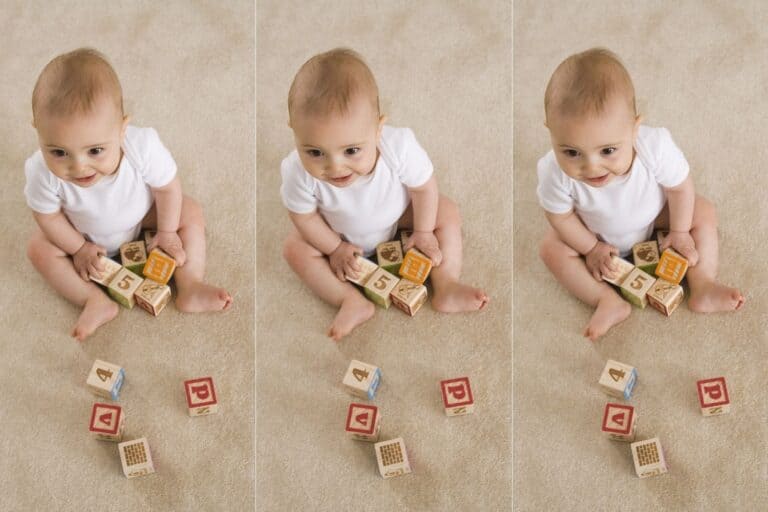Toddler Bike: The Ultimate Guide to Choosing the Best One for Your Child

If you’re a parent or caregiver, you know that toddlers are energetic and always eager to explore their surroundings. One great way to encourage their sense of adventure and help them develop their coordination and balance is by introducing them to toddler bikes. A toddler bike is designed with the needs of young children in mind, and they come in various styles and sizes to suit different ages and skill levels.

Some toddler bikes are designed as balance bikes, meaning they don’t have pedals and allow children to focus on learning to balance on two wheels. Other bikes come with training wheels to help children get used to pedaling and steering while still providing a stable base to build their confidence. No matter which type of bike you choose, it’s essential to make sure it’s the right size for your child and that they wear appropriate safety gear like helmets and knee pads.
When shopping for toddler bikes, you’ll find that there are many options available from a variety of brands and retailers. With the right bike and a little practice, your toddler will be on their way to exploring the world on two wheels.
Why Choose a Toddler Bike
Choosing a toddler bike for your little one can be an excellent investment in their physical and mental development. Here are some reasons why:
Safety Features
Most toddler bikes have safety features designed to protect your child while riding. These features can include:
- Stable, wide bases designed to prevent tipping
- Lightweight frames for easy maneuverability
- Adjustable seat heights to accommodate growing children
- Hand brakes for added control
- Reflective materials for visibility in low-light conditions
Benefits of Riding a Toddler Bike
Riding a toddler bike can provide numerous benefits for your child, including the following:
- Improved balance and coordination
- Increased physical activity and exercise
- Enhanced cognitive development and problem-solving skills
- Boosted self-confidence and independence
Types of Toddler Bikes
When choosing a toddler bike, there are two main types to consider: balance bikes and pedal bikes.
Balance Bikes
Balance bikes are designed to help toddlers learn how to balance on two wheels before they start pedaling. They have no pedals, so the child uses their feet to push themselves. This helps them develop the balance and coordination needed to ride a pedal bike later.
Balance bikes are often lightweight and easy to maneuver, making them an excellent choice for younger children.
Many retailers nowadays provide the option of converting the toddler bike from a tricycle to a balance bike as your child grows. Personally, this is the type of bike I got for my child so she can start using it at one year old.
Pedal Bikes
Pedal bikes are the classic type of bike that most of us grew up riding. They have pedals that the child uses to move the bike forward and often come with training wheels to help them learn how to balance.
While pedal bikes are great to learn from, they may not be advisable for use by very young children. However, you can introduce your child to a pedal bike at a young age by getting them a tricycle with pedals.
What Age Can You Introduce A Balance Bike
Typically, children can use a balance bike around 18 months to 2 years of age. However, every child is different, so it’s important to consider their development and readiness. Some children may be able to start using a balance bike earlier, while others may need more time to develop their balance and coordination skills. It’s important to supervise children closely while using a balance bike and to ensure they wear appropriate safety gear, such as a helmet and knee pads.
Introducing A Balance Bike
Introducing a balance bike to a toddler can be a fun and exciting experience for both the child and the parent. Here are some tips to help you get started:
- Choose the right size: Make sure you choose a balance bike that is the right size for your child. The bike should be low enough for them to touch the ground with their feet, and the handlebars should be comfortable.
- Start indoors: To help your child get used to the balance bike, let them ride it indoors on a flat surface. This will help them get a feel for the bike and build their confidence.
- Use a gentle slope: Once your child is comfortable riding the balance bike indoors, you can move outside to a gentle slope. This will help them learn how to balance and steer the bike.
- Encourage them: Encourage your child as they learn to ride the balance bike. Praise their efforts and celebrate their successes.
- Practice regularly: The more your child practices, the better they will get. Set aside time each day for them to ride their balance bike.
Remember, every child learns at their own pace, so be patient and supportive as they learn to ride their balance bike.
What Age Can You Introduce A Pedal Bike
Most children are ready to transition from a balance bike to a pedal bike between ages 3 and 6. However, just like with balance bikes, assessing whether you think your child is ready for a pedal bike is important. Some children may be ready to start riding a pedal bike earlier, while others may need more time to develop their balance and coordination skills.
Introducing A Pedal Bike
Before introducing a pedal bike, ensure your child has mastered the basics of balance and steering on a balance bike. Once they have these skills, they will be better prepared to start pedaling.
Here are some tips to help you get started:
- Remove the pedals: To help your child get used to the bike’s feel, start by removing the pedals and lowering the seat so your child can use the bike as a balance bike. This will help them build confidence and get used to the bike’s feel.
- Practice balancing and steering: Once your child is comfortable balancing and steering the bike, you can reattach the pedals and raise the seat to the appropriate height. Encourage your child to practice pedaling and braking while you hold onto the back of the bike to help them balance.
- Gradually increase speed: As your child becomes more comfortable pedaling, you can gradually increase their speed and let go of the bike to let them ride independently. Remember to always supervise your child while learning to ride a pedal bike and to ensure that they wear appropriate safety gear, such as a helmet and knee pads.
Factors to Consider When Choosing a Toddler Bike
These are the factors to consider when choosing a toddler bike.
Size
When choosing a toddler bike, size is a crucial factor to consider. First, ensure the bike is the right size for your child’s height and inseam. A bike that is too big or small can be uncomfortable and unsafe for your child to ride. The most common toddler bike sizes start at 12-inch wheels and go up to 16-inch wheels.
Measuring your child’s inseam is vital to ensure that the bike you choose is the right size. The inseam measurement is the distance from the ground to your child’s crotch. In addition, you want to ensure your child can comfortably straddle the bike with both feet flat on the floor. This will help your child feel more stable and confident while riding.
Weight
The weight of the bike is another crucial factor to consider. You want to choose a lightweight bike that is easy for your child to handle. A heavy bike can be challenging for your child to maneuver and control, which can be dangerous. Look for bikes made from lightweight materials like aluminum.
Remember that while a lighter bike is generally better, you don’t want to sacrifice durability for weight. So make sure your bike is sturdy and well-built, even if it’s not the lightest option.
Durability
Durability is also an essential factor to consider when choosing a toddler bike. You want a bike that will last and withstand regular use. Look for a bike made from high-quality materials with a sturdy frame.
Adjustability
Finally, you want to choose an adjustable bike to meet your child’s changing needs. Look for bikes that have adjustable seat heights and handlebars. This will allow you to customize the bike to your child’s size and ensure they are comfortable while riding.
Adjustability is also important because it allows your child to grow with the bike. As your child gets taller and more experienced, you can adjust the bike to fit their changing needs. This will help your child feel more confident and comfortable while riding.
Introducing a toddler bike and learning how to ride one can be an exciting time for you and your toddler, but it can also be overwhelming for your child. When teaching your toddler how to ride a bike, be patient and make the learning experience fun for your child so that they will continue to want to learn how to ride a toddler bike.
This article originally appeared on Hello Sensible.






